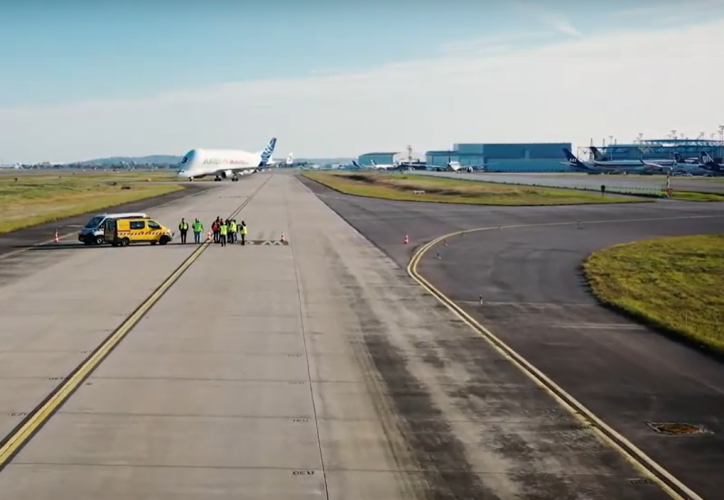Eurocontrol, the French air navigation service provider DSNA and Toulouse-Blagnac Airport have joined forces to validate the safety aspects associated with using drones to inspect the airport manoeuvring area with one runway remaining active.
According to a Eurocontrol statement:
“Our tests were successful – making this a pioneering effort that paves the way for the future safe integration of drones into airport operations, which has the potential to bring important efficiency improvements. Together our partners, we have developed a generic safety case on using drones to inspect runways, taxiways and approach lighting and to calibrate PAPI, the precision approach path indicator for pilots.
“One of the major safety challenges was to maintain air operations with take-offs and landings on one of the runways, while inspecting the adjacent runway located under 300 metres away. We carefully evaluated all risks including potential mid-air collisions with aircraft landing or taking off from the adjacent active runway, but also collision risks on the ground (people, vehicles and sensitive equipment).
“The preparation for the live experiments also included defining 3-dimensional volumes of airspace that the drone should not leave for each type of inspection, the development of a specific drone phraseology and radio communication procedures; for this we worked with an experienced drone pilot. In addition, the study took into account all the possible risks that might affect the navigation or the stability of the drone, such as adverse weather conditions (wind, precipitation) or technical failures related to the drone or the communication system (C2 link).
“When it came to operating the drone, the challenge was flying it in BVLOS (beyond-visual-line-of-sight) mode, in particular for the runway inspection, when the distance from the drone pilot was greater than 1 km. This meant that the drone was flying beyond the pilot’s visual sight, the only link between pilot and drone provided by an on-board camera and the geolocalisation function of the drone. This is where the “geo-caging” function came into play, alerting the drone pilot if the drone were to approach the boundaries of the predefined volume of airspace in which it operated.
“Using drones to perform various inspections can bring significant efficiency gains. For example, verifying the calibration of two PAPIs of a runway currently takes a ground airside operator half a day; with a drone, this operation can be performed in just a few minutes. This significantly reduces runway closure time while at the same time yielding more precise results.
“The possibilities for extending drone use in and around the airport are wide, and in the future, drones could be used for numerous other applications such as ILS calibration, wildlife management, and inspections of airport buildings, fences and aircraft airframes on the aprons.
“Eurocontrol will continue to develop generic safety cases for other types of drone usage in the airport environment, helping local airport operators and ANSPs to address their specific needs.”
For more information




